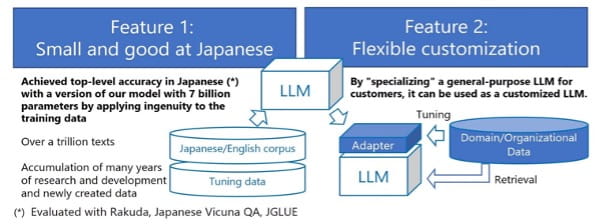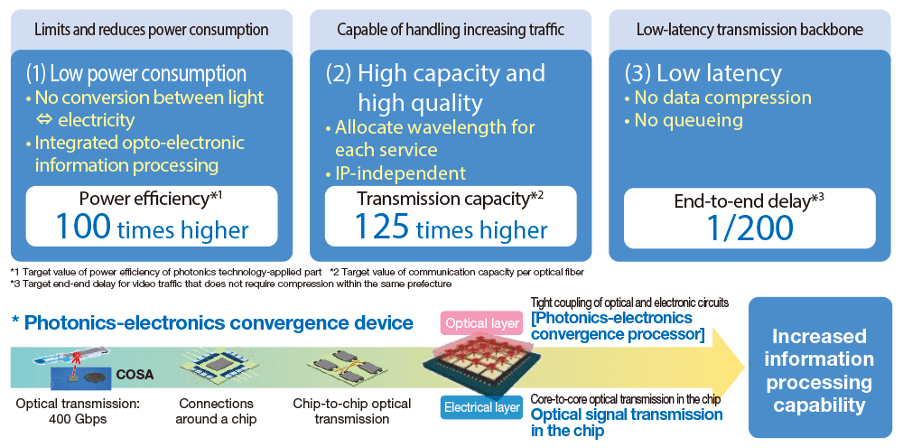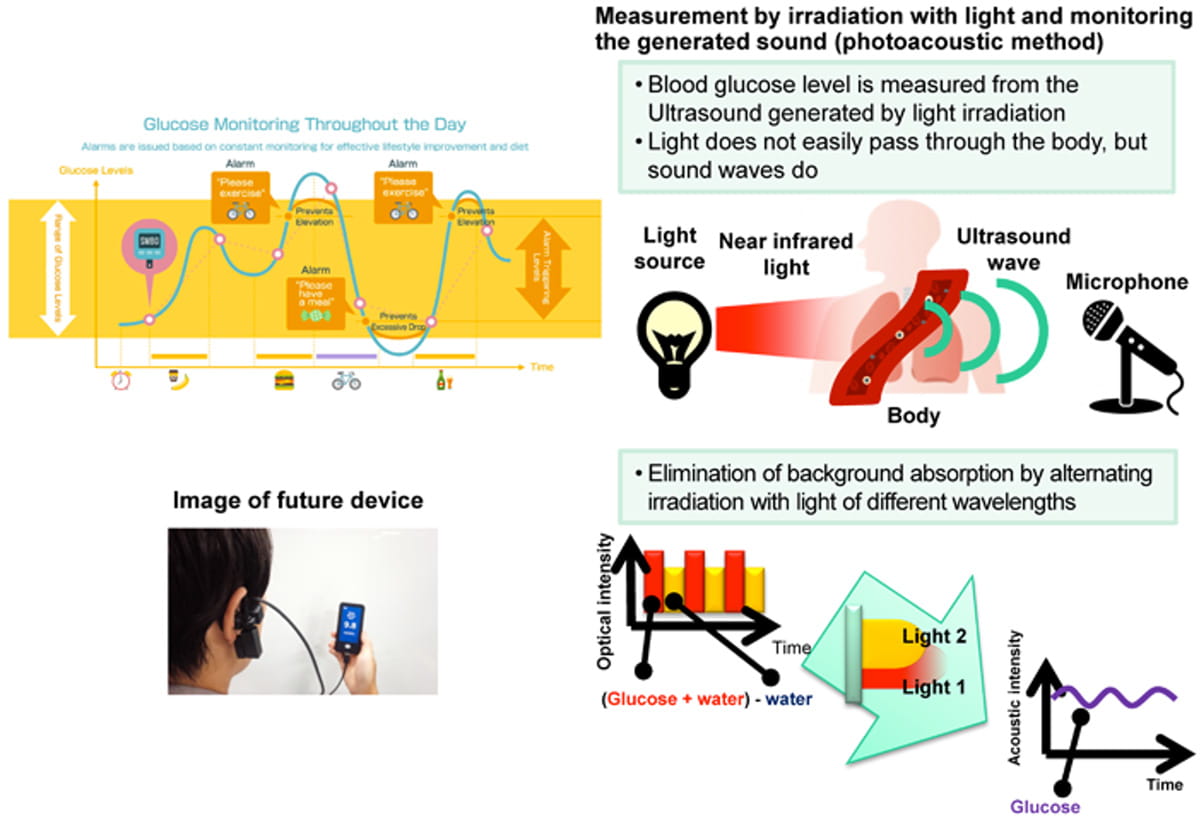Every year, the NTT R&D Forum in Tokyo gives NTT research scientists and engineers a stage to present their latest breakthroughs and visions for the future in networking, computing, AI, and more. Following my visit last year, I gave a taster of some of NTT’s most exciting innovations, including digital twins of the human heart and post-quantum cryptography and it was fantastic, visiting Tokyo again this November to see many of these innovations maturing and expanding.
Sustainability is at the top of many organisations’ agendas going into 2024. So, at this year’s NTT R&D Forum, we were treated to a showcase of how far our technology has advanced in the last twelve months, with a particular focus on sustainable technology infrastructure, human-centric design, and environmental solutions. Here are my top 8 highlights from the event:
Sustainable Technology Infrastructure
1. Tsuzumi Heralds A New Era of Energy-Efficient AI
Over the past few months, the conversation around AI has evolved. On one hand, it’s a transformative technology that already adds £3.7 billion per year to the UK economy. On the other, the environmental impact of training these large language models (LLMs) has come into sharp focus. A recent study found that 1,000 text-generation queries produced an average of 5.4 grams of CO2. Given that ChatGPT alone clocked 1.8 billion visits in May 2023, you can imagine how this starts to add up.
So, just as the sustainability of LLMs – and the money that organisations must spend to train them – was coming into question, NTT researchers introduced their newest AI model: Tsuzumi.
Tsuzumi is an ultra-lightweight model with much lower training costs and energy consumption than other AI models. Therefore, it’s designed to focus on specific capabilities. It’s multimodal, so it can carry out image and text-based tasks while running effectively on a CPU or single GPU. This means just a fraction of compute costs for enterprise customers compared to larger LLMs when it launches commercially in April 2024.

Developed by NTT Laboratories and drawing on NTT’s decades of experience in Natural Language Processing and AI, Tsuzumi has demonstrated transformative efficiency improvements. and trials are already underway with Kyoto University Hospital and Tokio Marine & Nichido Fire Insurance and many others.
However, this showcase is just one part of a larger strategy by NTT to build truly sustainable ICT infrastructure at scale:
2. IOWN Makes Progress Towards Society 5.0 and The Green Internet
Society 5.0 is the Japanese government's vision for a highly technological yet human-centric future society. It aims to solve societal issues through extensive integration of technologies like AI and IoT into physical spaces and infrastructure. In line with this vision, NTT established its IOWN program as a long-term plan to develop connected, intelligent technologies focused on improving efficiency and sustainability.
IOWN is NTT’s 10-year programme to develop a next-generation ICT infrastructure that is more energy-efficient, scalable, and intelligent, underpinning the ‘Green Internet'. With IOWN, we aim to achieve 100x more energy efficiency, 125x more transmission capacity, and lower end-to-end latency by 200x more than the current network.
IOWN has three main components: cyber-physical convergence, distributed computing, and all-photonics network (APN).

In Japan, NTT has taken concrete steps on the IOWN roadmap by deploying IOWN APN 1.0 commercially for data centre interconnection in March, supporting continued data cloud expansion in the ‘Ultra-low-latency services’ stage of IOWN 1.0. This, along with another network infrastructure breakthrough I’m about to cover, brings the vision of Society 5.0 closer to reality.
3. The World’s First 1.4-Tbit/s Wireless Transmission
NTT researchers presented how they successfully achieved a world record wireless data transmission rate of 1.44 Tbit/s. Using orbital angular momentum multiplexing technology in the sub-terahertz frequency band between 135-170 GHz, they completed a 1.4-Tbit/s wireless transmission – the first of its kind.
This is a breakthrough in high-capacity wireless transmission that complements NTT’s IOWN photonics concept with the direction for 6G mobile networks, helping bring terabit-class capacity to wireless portions of the network. This technology has the potential to enable wireless access to vast amounts of data exceeding 1 Tbit/s in the future, supporting new services like VR/AR, high-definition video streaming, connected cars, and telemedicine that will require huge wireless bandwidth.
Alongside some remarkable announcements showcasing the progress of NTT Group’s space network and data infrastructure expansion, this is remarkable evidence of how quickly the underpinning technology advances are being made to make the infrastructure for Society 5.0 a reality.
Now, let’s move on to examine some of the most exciting advances in human-centric design by NTT Group researchers over the last year.
Human-Centric Design
4. Metaverse DJ-ing with Project Humanity
NTT’s Project Humanity aims to solve problems by focusing on people – both those with diseases and disabilities and those who support them. As part of Project Humanity, NTT has developed an interface to allow people with severe disabilities like Amyotrophic lateral sclerosis (ALS) to control avatars and games in the metaverse using residual muscle movements detected by sensors. The idea is to use technology to help these people communicate and participate in society.

As one example to bring this to life, NTT showed how an ALS patient could DJ in the metaverse using gaze input to control the avatar and residual muscle inputs to reflect actual motions. Going forwards, the aim is to further develop expression in the metaverse and real world via electrical muscle stimulation and robots so ALS patients can communicate freely without barriers. But communication is just one aspect of design; we also witnessed new devices to help people manage their conditions.

5. Battling Diabetes with a Non-Invasive Glucose Measure Device
From California and the NTT Research Team, another highlight of human-centric design from NTT is getting closer to being ready for market. The device is a piece of wearable technology that continuously monitors blood glucose levels without needle pricks, using photoacoustic measurement.

This ear lobe sensor allows non-invasive tracking of glucose fluctuations over time. By gathering data on healthy metabolism, this human-computer interface can also provide personalised diet and exercise recommendations for maintaining wellness.
Human-computer interaction research doesn’t end with the visualisation and treatment of ill health – it also has powerful applications in media and entertainment.
6. Developing a Personal Sound Zone for Human-Computer Interaction
NTT Group has been connecting people through sound since it was founded as Nippon Telegraph and Telephone Public Corporation in 1952. We have the best part of a century’s experience in telecoms, and optimising how our senses interact with technology remains an important focus for us.
One demonstration showed how, by overlaying certain sound waves in antiphase, we can cancel interference through destructive interference, allowing sound to be directed more precisely. Since NTT first exhibited its ‘Personalised Sound Zone’ technology in 2020, which applies this principle to deliver higher quality audio directly to the user’s ears while minimising leakage, NTT has continued research and development in this area.
Last year, NTT commercialised the Sonority nwm Earphones, an extensive new product line. Their open, non-blocking, non-leaking design is ideal for running, cycling, construction sites, and more. In fact, NTT’s new earphone transceivers were used to help run this year’s event.
Now to finish, let’s look at a couple of the ways in which NTT’s research is being used more widely to address societal issues, like improving food security and carbon capture worldwide in a more efficient, sustainable way.
Environmental Solutions
7. De-acidifying the Oceans with Algae
Using its cultivation technology to adjust for optimal temperature, humidity, nutrients, and light intensity, NTT is hoping to help de-acidify the oceans by producing algae that absorbs higher-than-normal levels of CO2.
These algae will also be used as feed in land-based aquaculture plants to produce seafood that fixes more carbon. A plant in Iwata will produce shrimp using this method to create a sustainable domestic production system.
8. Increasing Global Food Supply
Continuing the theme of efficient carbon capture and food production, NTT has partnered with the Regional Fish Institute to produce fish and shellfish fed on its home-grown algae. NTT has created sea bream with 1.6x the edible portion, fed on the same foodstuffs it has engineered for extra-activated photosynthesis and rapid growth.
This sea bream increases aquaculture efficiency and sustainability, while the algae it feeds on fixes increased levels of CO2. Overall, this project is part of NTT's vision for sustainable foods that connect producers and consumers for mutual benefit.
Innovations for a Sustainable Future
With researchers hard at work from California to Tokyo to build sustainable, efficient solutions in network infrastructure, AI, human-computer interaction, food production, and carbon capture, NTT Group is building towards its vision of Society 5.0 and the Green Internet.
I’m excited to see and share the next wave of announcements and discussions in 2024 from events early in 2024 like NTT Docomo Open, the NTT DATA Innovation Conference and the NTT Upgrade Reality conference in California.
As our colleagues at NTT R&D focus on the research, we at NTT DATA are always looking for ways to develop these innovations and put them into practice for our clients and partners. To learn how to transform AI concepts into actionable solutions, download our free whitepaper.
Alternatively, if you’d like to learn more about these innovations, take a moment to get in touch with the team and arrange a 45-minute consultation.